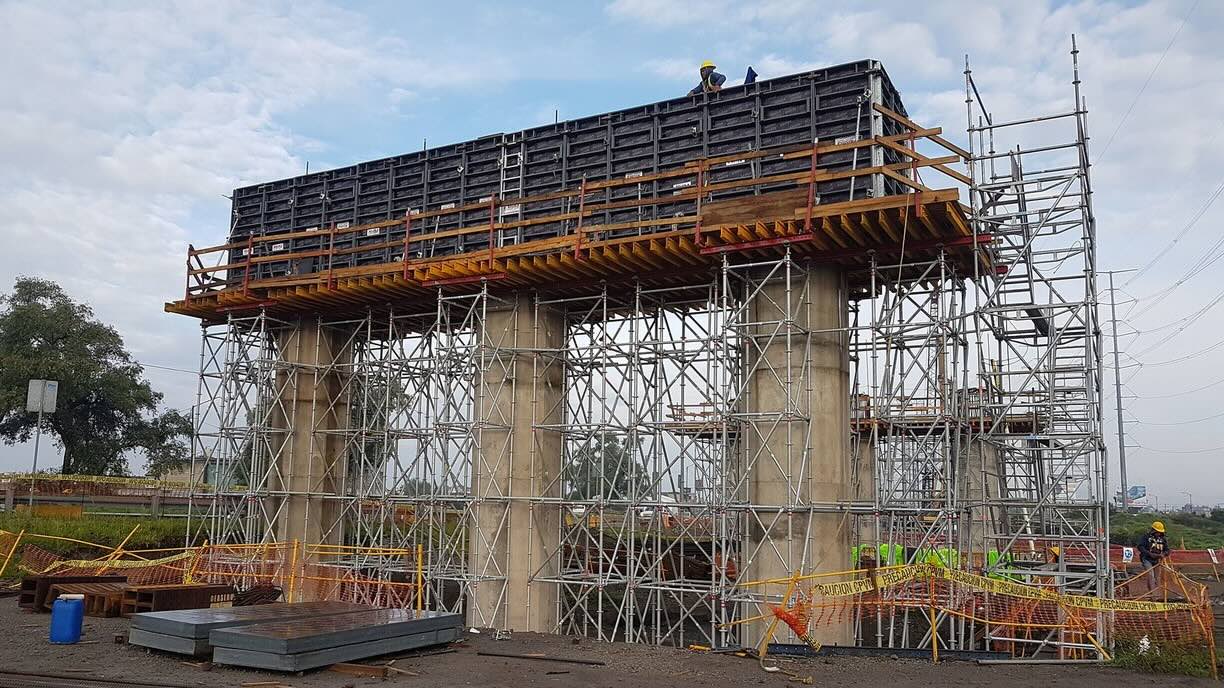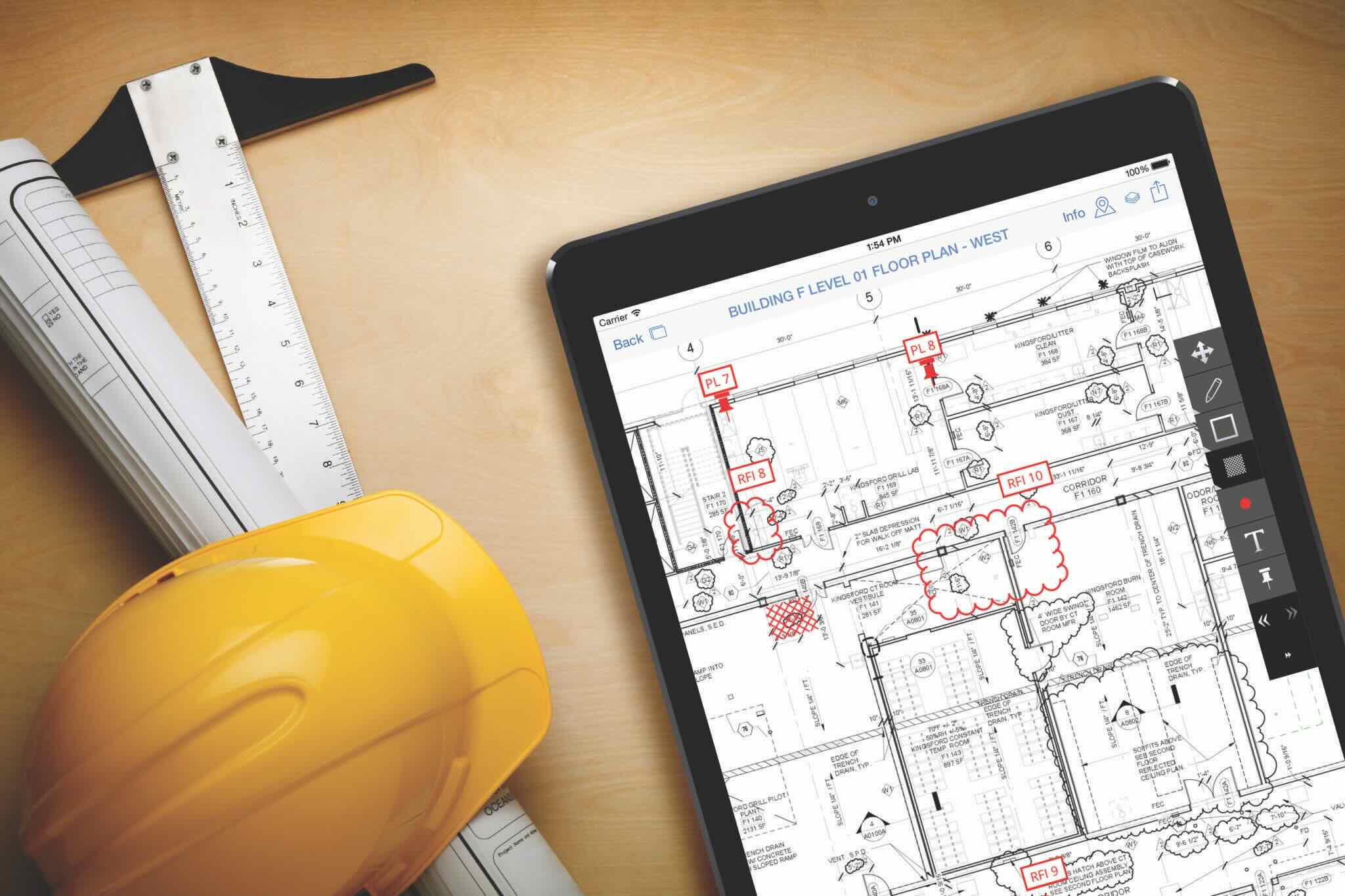Home>diy>Building & Construction>What Is An ASI In Construction


Building & Construction
What Is An ASI In Construction
Modified: October 18, 2024
Discover what an ASI (Architectural Services Index) in construction entails and how it contributes to the building-construction industry. Gain insights into the role and significance of ASIs for successful projects.
(Many of the links in this article redirect to a specific reviewed product. Your purchase of these products through affiliate links helps to generate commission for Storables.com, at no extra cost. Learn more)
Introduction
In the dynamic and fast-paced world of construction, it is crucial to have effective management and communication strategies in place to ensure smooth project execution. One such strategy is the use of an ASI, also known as an Architectural Supplemental Instruction, in construction projects.
ASIs play a vital role in ensuring that construction projects remain on track and meet the goals and requirements set forth by the architects, engineers, and clients. They provide a mechanism for addressing any changes or modifications that may arise during the construction process.
Understanding the role and importance of ASIs in construction is essential for project managers, contractors, architects, and all stakeholders involved in the building process. This article aims to provide a comprehensive overview of ASIs in construction and shed light on their significance.
In the following sections, we will delve into the definition of ASI, explore their importance, discuss their role in construction projects, outline the process of implementing an ASI, highlight the benefits and challenges associated with their use, and examine real-world examples of successful ASI implementation.
By the end of this article, readers will have a clear understanding of what an ASI is and the value it brings to construction projects.
Key Takeaways:
- ASIs are crucial in construction for managing changes, ensuring clear communication, maintaining quality control, and promoting efficient project management. They facilitate collaboration and minimize disruptions for successful outcomes.
- While ASIs offer benefits such as effective change management and enhanced client satisfaction, they also present challenges like time constraints and increased costs. Proactive management and collaboration are essential for successful ASI implementation.
Read more: What Does ASI Stand For In Construction
Definition of ASI in Construction
An ASI, or Architectural Supplemental Instruction, refers to a document or instruction that outlines changes or modifications to architectural plans, specifications, or other project documents during the construction process. ASIs are typically issued by the architect or design team and serve as a means of communication between the design and construction teams.
ASIs are used to address any discrepancies, errors, or omissions that may arise during the construction phase. They provide a structured process for documenting and implementing changes to ensure that the final construction meets the desired specifications and requirements.
ASIs can cover a wide range of modifications, including alterations to materials, finishes, dimensions, or construction methods. They can also address issues such as code compliance, structural changes, or coordination with other trades.
It is important to note that ASIs should be distinguished from Requests for Information (RFIs). RFIs are used to seek clarification or gather additional information about the project, while ASIs are specifically focused on documenting and implementing changes to the original design documents.
ASIs are typically numbered sequentially and tracked throughout the construction process. Each ASI has a designated originator, recipient, and date of issue. The document includes a detailed description of the change, along with any necessary drawings, specifications, or other supporting documentation.
The ASI process involves a collaboration between the architect, contractor, and other relevant parties, ensuring that all stakeholders are aware of and can accommodate the proposed changes. This collaborative approach minimizes disruptions, delays, and potential conflicts that may arise from unaddressed modifications.
Overall, an ASI serves as a mechanism to facilitate effective communication, ensure quality control, and maintain coordination between the design and construction phases of a project.
Importance of ASI in Construction
The use of ASIs in construction projects holds significant importance for several reasons. They are an essential tool for managing changes and ensuring project success. Here are some key reasons why ASIs are crucial in construction:
- Flexibility and Adaptability: Construction projects are subject to changes, whether due to unforeseen circumstances, design modifications, or client requirements. ASIs provide a structured process to address these changes efficiently and effectively. They allow for necessary adjustments to be made without sacrificing the integrity of the design or construction process.
- Clear Communication: ASIs act as a communication channel between the design and construction teams. They provide a way to convey changes, modifications, and clarifications in a clear and organized manner. This ensures that all parties involved are aware of the revisions and can implement them accordingly, avoiding misunderstandings and minimizing the potential for errors or conflicts.
- Quality Control: ASIs play a critical role in maintaining the quality and integrity of the construction project. They allow for careful review and evaluation of proposed changes and their potential impact on the overall design and functionality. By documenting and tracking modifications through ASIs, project teams can ensure that the final product meets the desired standards and specifications.
- Contractual Compliance: ASIs help ensure compliance with contractual obligations. They provide transparency and accountability by documenting any deviations from the original design and clearly stating the reasons for the changes. This not only protects the interests of all involved parties but also helps resolve any disputes or claims that may arise during or after the project.
- Time and Cost Management: By addressing changes promptly and efficiently through the ASI process, construction projects can better manage their timeline and budget. ASIs help prevent delays and minimize additional costs that may result from unaddressed modifications. They allow for proactive decision-making and enable project teams to allocate resources effectively.
Overall, the importance of ASIs in construction lies in their ability to promote effective communication, flexibility, quality control, contractual compliance, and efficient project management. By implementing ASIs, construction projects can navigate changes and challenges more smoothly, leading to successful outcomes and client satisfaction.
Role of ASI in Construction Projects
The role of ASIs (Architectural Supplemental Instructions) in construction projects is multifaceted and essential for ensuring the successful completion and delivery of a high-quality final product. ASIs fulfill several key roles throughout the construction process:
- Managing Changes: One of the primary roles of ASIs is to manage changes that arise during the construction phase. ASIs provide a structured process for documenting and implementing modifications to the original design plans. They serve as a mechanism to address discrepancies, errors, omissions, or new requirements that were not accounted for in the initial documents.
- Facilitating Communication: ASIs act as a communication tool between the design team, including the architect and engineers, and the construction team. They provide a formal way to convey changes, clarifications, or additional information, ensuring that all parties are on the same page. This communication helps maintain coordination and minimizes the risk of misunderstandings or delays.
- Ensuring Compliance: ASIs play a crucial role in ensuring compliance with design standards, building codes, and regulations. They help address any changes required to meet these requirements, ensuring that the construction project meets the necessary legal and safety standards.
- Quality Control: ASIs contribute to maintaining the quality and integrity of the final construction. They allow for careful review and evaluation of proposed changes to ensure that they align with the original design intent. By documenting modifications through ASIs, project teams can ensure that the final product meets the desired standards and specifications.
- Coordinating with Other Trades: ASIs help coordinate the work of different trades involved in the construction process. They provide a platform for addressing conflicts or coordination issues that may arise between various trades, such as electrical, plumbing, or HVAC. By documenting and communicating changes through ASIs, project teams can ensure proper coordination and integration of different systems.
- Contractual Documentation: ASIs serve as critical contractual documentation. They formalize changes made to the project scope, specifications, or materials, protecting the interests of all parties involved. ASIs provide a clear record of the changes, including reasons and justifications, and help resolve any disputes or claims that may arise during or after the construction project.
Overall, the role of ASIs in construction projects is to manage changes, facilitate communication, ensure compliance, maintain quality control, coordinate different trades, and serve as contractual documentation. By fulfilling these roles, ASIs contribute to the successful execution and delivery of a construction project, mitigating risks and maintaining the desired standards of the design and construction process.
Process of Implementing an ASI in Construction
The implementation of an ASI (Architectural Supplemental Instruction) in construction projects follows a specific process to ensure clarity, communication, and smooth execution of changes. Here is a step-by-step guide to the process of implementing an ASI:
- Identification of Changes: The first step in implementing an ASI is identifying the need for a change. This can occur due to design errors, omissions, unforeseen circumstances, or client requirements. The construction team, design team, or other stakeholders involved should recognize the need for a change and bring it to the attention of the architect or project manager.
- Request for an ASI: Once a change is identified, the construction team submits a formal request for an ASI to the architect or design team. The request should include a detailed description of the proposed change, its impact on the project, and any supporting documentation such as drawings, specifications, or calculations.
- Review and Evaluation: Upon receiving the ASI request, the architect and design team undertake a thorough review and evaluation process. This involves assessing the feasibility, impact, and implications of the proposed change on the design, functionality, timeline, and budget of the project. The design team may consult with relevant experts or stakeholders to gather additional input.
- Documentation and Issuance: After the review and evaluation process, the architect or design team prepares the ASI document. The ASI includes a unique identifier, a detailed description of the change, reasons for the change, any necessary drawings or specifications, and the date of issuance. The ASI is then communicated to all relevant parties, including the construction team, subcontractors, and any other stakeholders affected by the change.
- Approval and Communication: The construction team reviews and acknowledges the ASI. Any questions, concerns, or clarifications regarding the ASI are addressed through formal communication between the construction team and the architect or design team. Once the ASI is approved by all parties involved, it is considered effective, and the construction team proceeds with implementing the change.
- Implementation and Documentation: The construction team implements the changes specified in the ASI, ensuring proper coordination with relevant trades, suppliers, or subcontractors. Any modifications to the construction process, materials, or finishes are documented and recorded for future reference. The changes are consistently monitored and inspected to ensure compliance with the ASI and the project requirements.
- Review and Closeout: Once the changes specified in the ASI are implemented, a thorough review and closeout process is conducted. This involves verifying that the changes have been successfully incorporated, assessing the quality of the work, and ensuring that the final construction aligns with the revised design intent stated in the ASI.
Following this process ensures that changes are properly documented, communicated, and implemented, minimizing disruptions and maintaining the integrity of the construction project. Effective implementation of ASIs allows for seamless coordination between the design and construction teams, promoting successful project outcomes.
When working with an ASI (Architect’s Supplemental Instruction) in construction, make sure to carefully review the proposed changes and assess their impact on the project timeline and budget before approving.
Read more: What Is Construction
Benefits of Utilizing an ASI in Construction
Utilizing an ASI (Architectural Supplemental Instruction) in construction projects offers several key benefits that contribute to the overall success and efficiency of the project. Here are some of the advantages of utilizing an ASI:
- Effective Change Management: ASIs provide a structured and organized process for managing changes in construction projects. They ensure that modifications to the original design are properly documented, evaluated, and communicated, minimizing delays, conflicts, and potential errors. ASIs allow for proactive and efficient decision-making in response to changes, maintaining the project’s progress and quality.
- Clear Communication: ASIs serve as a mechanism for clear and transparent communication between the design team and the construction team. They provide a formalized way to convey changes, modifications, and clarifications, ensuring that all parties have a thorough understanding of the revisions. Clear communication facilitated by ASIs minimizes misunderstandings, fosters collaboration, and promotes effective coordination between various stakeholders.
- Improved Quality Control: By implementing ASIs, construction projects can enhance their quality control processes. ASIs allow for careful review and evaluation of proposed changes, ensuring that they align with the project’s overall design intent and requirements. This helps maintain the desired standards and specifications, contributing to a high-quality final product.
- Contractual Compliance: ASIs provide a contractual framework for managing changes and variations to the original project scope. They serve as important legal and contractual documentation, formalizing modifications and protecting the interests of all parties involved. ASIs make it easier to demonstrate compliance with agreed-upon terms, resolve disputes, and handle any claims that may arise during or after the construction project.
- Efficient Resource Allocation: ASIs allow for better resource allocation and budget management. By formally documenting changes through ASIs, project teams can accurately track the impact of modifications on the project’s timeline and budget. This enables informed decision-making and helps prevent cost overruns or delays associated with unaddressed changes.
- Enhanced Client Satisfaction: Utilizing ASIs demonstrates a commitment to addressing and meeting client requirements and expectations. ASIs provide a platform for effective communication and collaboration, ensuring that client requests or changes are properly addressed and incorporated. This results in increased client satisfaction and can lead to positive referrals and future business opportunities.
Overall, the benefits of utilizing an ASI in construction projects include effective change management, clear communication, improved quality control, contractual compliance, efficient resource allocation, and enhanced client satisfaction. By leveraging the advantages of ASIs, construction projects can navigate changes more smoothly and achieve successful outcomes.
Challenges and Limitations of ASI in Construction
While ASIs (Architectural Supplemental Instructions) offer numerous benefits, there are also several challenges and limitations that need to be considered when implementing them in construction projects. Understanding these challenges is crucial to effectively address and overcome them. Here are some common challenges and limitations of ASIs:
- Time Constraint: ASIs can introduce additional time constraints to the construction project. The process of documenting, reviewing, and approving ASIs requires time and coordination between the design team and the construction team. This can potentially impact project timelines if the changes necessitated by the ASIs are significant. It is important to manage ASIs efficiently to minimize delays.
- Increased Costs: ASIs may result in added costs to the project. Changes or modifications specified in ASIs often require adjustments to materials, labor, or construction techniques, leading to potential cost overruns. If not managed carefully, the cumulative impact of multiple ASIs can significantly affect the project budget. It is essential to assess the financial implications of ASIs and ensure they align with the project’s financial constraints.
- Communication Challenges: Effective communication between the design team and the construction team is crucial for successful ASI implementation. Communication breakdowns or delays can lead to misunderstandings or errors in addressing the changes specified in ASIs. Ensuring clear and timely communication, and using standardized processes and documentation, can help mitigate these challenges.
- Coordination with Other Trades: Implementing ASIs often requires coordination between different trades involved in the construction process. This can be challenging, especially when changes affect multiple systems or trades. Misalignment or discrepancies between trades can lead to conflicts or complications in implementing ASIs. Coordinating and communicating effectively with all parties involved is critical to avoid conflicts and ensure seamless integration of changes.
- Potential Design Compromises: ASIs may require design compromises to accommodate changes during the construction process. These compromises, while necessary, may impact the original design intent or aesthetic vision. Balancing the need for changes with maintaining the overall design quality can be challenging. It is crucial to ensure that ASIs are evaluated carefully to minimize any adverse impact on the project’s design and functionality.
- Documentation and Tracking: Managing the documentation and tracking of ASIs can be a complex task, especially in larger construction projects with multiple stakeholders. Keeping track of all issued ASIs, their status, and any subsequent changes can be demanding. Implementing robust systems and procedures for documentation and tracking is essential to maintain transparency and accountability.
Despite these challenges and limitations, proactive management and effective collaboration can help mitigate potential issues associated with ASIs in construction projects. By anticipating and addressing these challenges, project teams can maximize the benefits of ASI utilization while minimizing their impact on project timelines, costs, and overall project quality.
Examples of Successful Implementation of ASI in Construction
There are numerous successful examples of the implementation of ASIs (Architectural Supplemental Instructions) in construction projects. These examples showcase how ASIs have been effectively utilized to manage changes, improve communication, and ensure project success. Here are a few notable examples:
- Case Study 1: High-rise Building Construction: In a high-rise building construction project, the design team issued ASIs to address a change in the window specifications. The change was the result of a revised city regulation regarding energy efficiency. ASIs were used to communicate the modified window requirements to the construction team, ensuring compliance with the new regulation. Through effective coordination and clear documentation, the ASIs were implemented efficiently, enabling the project to meet the updated energy efficiency standards without delaying the construction timeline.
- Case Study 2: Hospital Renovation Project: During the renovation of a hospital facility, the construction team encountered unforeseen structural issues while demolishing a section of the building. The design team promptly issued ASIs to address the structural modifications required to ensure safety and stability. The ASIs defined the necessary changes, including revised reinforcement details and additional structural elements. Through close collaboration and clear communication channels, the ASIs were implemented successfully, ensuring the structural integrity of the renovated hospital facility.
- Case Study 3: Commercial Office Building Project: In a commercial office building project, the furniture layout required adjustments due to tenant preferences and changes in office space requirements. ASIs were utilized to communicate the revised furniture arrangement to the construction team, allowing for necessary modifications to accommodate the new layout. The use of ASIs facilitated seamless communication between the design team, furniture suppliers, and the construction team, resulting in a smooth transition and successful completion of the project.
- Case Study 4: Educational Facility Construction: In the construction of an educational facility, the construction team discovered unforeseen site conditions that required alterations to the initial foundation design. ASIs were issued to address the changes in the foundation design, ensuring structural integrity and compliance with safety regulations. Through effective documentation and collaboration, the ASIs enabled the timely adjustment of the foundation design while keeping the project on schedule.
- Case Study 5: Residential Housing Development: In a residential housing development, ASIs were issued to modify the plumbing layout based on updated building code requirements. The ASIs facilitated clear communication between the design team and the construction team, ensuring compliance with the code changes without causing significant project delays. The successful implementation of ASIs allowed the project to adhere to the new regulations and deliver high-quality homes to the clients.
These examples demonstrate the successful utilization of ASIs in various construction projects. By effectively managing changes, fostering clear communication, and ensuring collaboration between the design and construction teams, these projects were able to address unforeseen issues and adapt to evolving requirements while maintaining project timelines and quality standards.
It is important to note that successful implementation of ASIs relies on open and frequent communication, a proactive approach to problem-solving, and the commitment of all project stakeholders to address changes effectively. By learning from these examples, construction projects can embrace ASIs as a valuable tool for managing changes and achieving project success.
Conclusion
ASIs (Architectural Supplemental Instructions) play a vital role in managing changes, facilitating communication, and ensuring the success of construction projects. They provide a structured process for documenting and implementing modifications to the original design, addressing discrepancies, errors, omissions, or new requirements that may arise during the construction process.
Throughout this article, we explored the definition of ASI, highlighted their importance, discussed their role in construction projects, outlined the process of implementing an ASI, and examined the benefits, challenges, and real-world examples of successful ASI implementation.
ASIs offer numerous benefits, including effective change management, clear communication, improved quality control, contractual compliance, efficient resource allocation, and enhanced client satisfaction. They provide a mechanism for collaborative decision-making, ensuring that changes are properly evaluated, communicated, and implemented, minimizing delays, conflicts, and potential errors.
However, it is essential to be aware of the challenges and limitations associated with ASIs, such as time constraints, increased costs, communication challenges, coordination with other trades, potential design compromises, and effective documentation and tracking.
By proactively addressing these challenges and leveraging the advantages of ASIs, construction projects can navigate changes and challenges more smoothly, achieving successful outcomes and client satisfaction. Effective implementation of ASIs requires clear communication, collaboration, and coordination between the design and construction teams. It also necessitates careful evaluation of the impact of changes on project timelines, budgets, and quality.
In conclusion, ASIs are a valuable tool in the construction industry, providing a structured approach to manage changes and modifications. By embracing ASIs and effectively utilizing them, construction projects can enhance communication, maintain quality control, ensure contractual compliance, and deliver successful projects.
Frequently Asked Questions about What Is An ASI In Construction
Was this page helpful?
At Storables.com, we guarantee accurate and reliable information. Our content, validated by Expert Board Contributors, is crafted following stringent Editorial Policies. We're committed to providing you with well-researched, expert-backed insights for all your informational needs.















0 thoughts on “What Is An ASI In Construction”